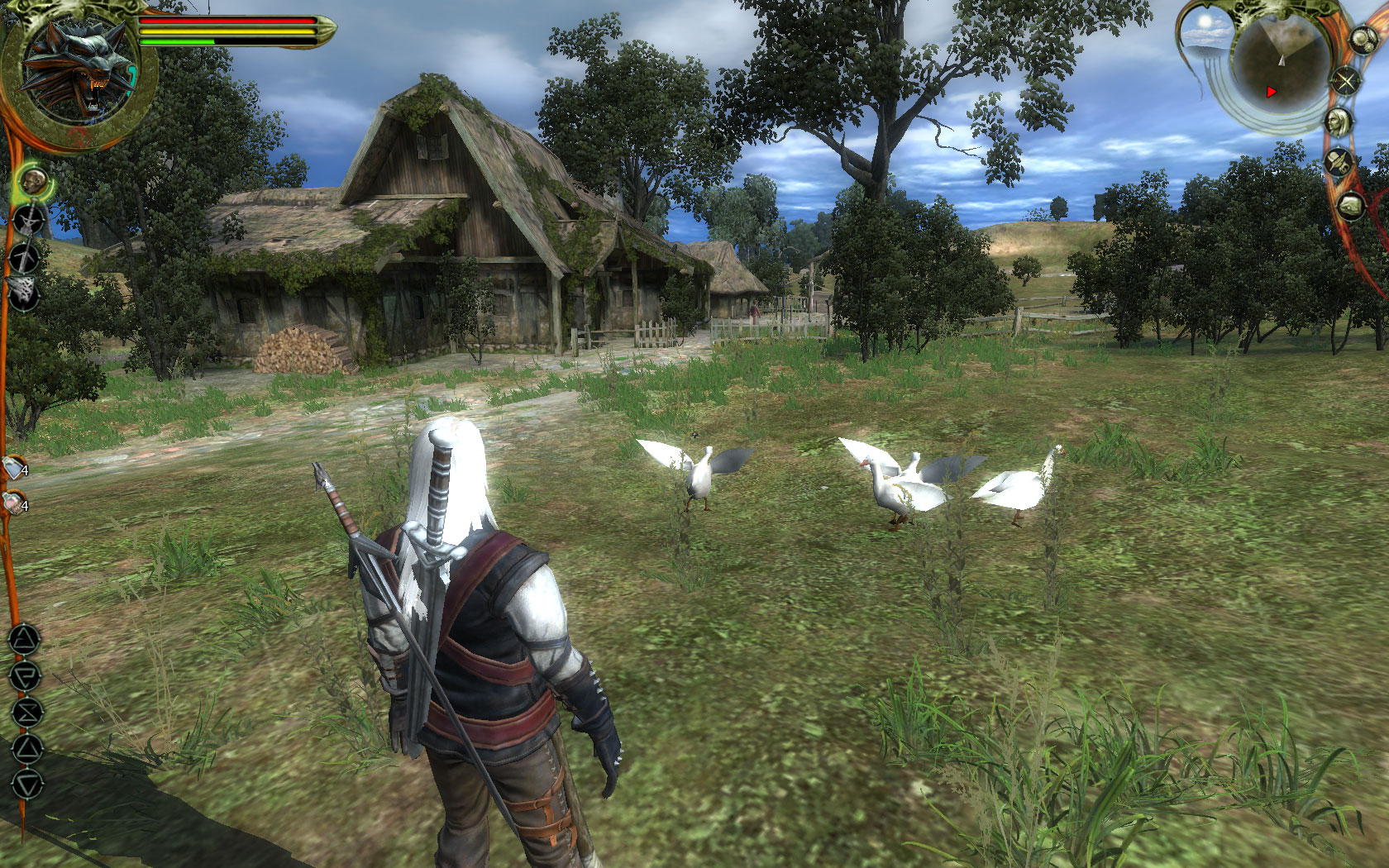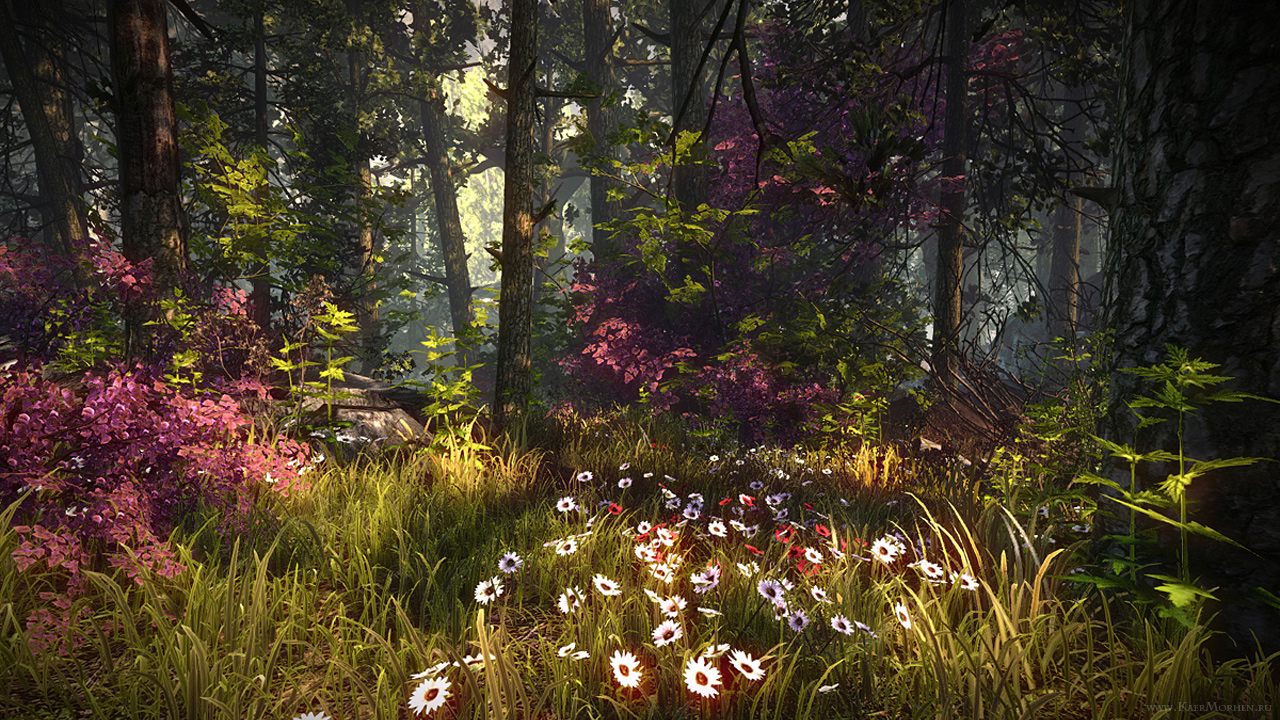Geralt himself is a fairly good character - a philosophing monster hunter for hire who has a bone to pick with destiny and who tries to reclaim his identity.GamerMage said:Elaborate then, if you don't mind. Characters: What were some good characters?
Battle System: If on the off chance I WERE to give the Witcher 2 a chance, please explain how I would play as a meleeing spell-caster.
Colorful Areas: Again, please elaborate.
Comphesensible Plot: As a guy that hasn't played the games, and might (I'll say that again, MIGHT) start via the first or second, please explain the plot, so that I may have some clue what's going on.
Dandelion/Jaskier - a womanizing bard, who is mischievous, but is very loyal to his friends and is actually pretty smart. There's more to him than meets the eye.
Zoltan Chivay - a dwarf war veteran who is also prone to philosophizing in his own way.
Vincent de Meis - captain of the guard of Vizima city, there's more to him than meets the eye. (1)
Thaler - appears to be just a fence, but in reality he's something else. Has some hidden depths you can reveal if you talk to people about him. (2)
Ziegfried - member of the Order of the Burning Rose, a knight. A nice guy who genuinely believes in knights doing good and provides contrast to Geralt's cynicism.(1)
Vernon Roche - leader of Temerian special force squad known as The Blue Stripes, that specializes in black ops and dealing with non-human terrorists. Pretty smart and badass, has some charm and a some depth to him. (2)
Iorveth - leader of Scoia'tael, the non-human resistance movement. Ruthless, but also loyal and can be a good friend (2)
Battle system: in both games Geralt primarily relies on his swords. The signs - the Witcher spells - play a supporting role. You have five signs in the first game and get another one in the second. Aard knocks enemy (or enemies) away, Igni burns them, Quen makes a shield for you, Axii makes enemies fight for you and Yrden leaves a trap on the ground. They can be used at any time once you acquire them, but deplete the Endurance bar that's like a mana bar. Also, in 2, depleting Endurance bar makes Geralt's attacks weaker.
In the first game, the swordfighting is like a rhythm game. You initiate the combo with the first strike and then press them at the right time by looking at the icon at the screen to prolong the combo. Should you do it too soon or too late, you break the combo and have to initiate it again. There are three combat styles - the Strong style, the Fast style and the Group style. Strong and fast work when you have to fight a single opponent and there are visual clues as to which style goes with which opponent - more lenient enemies go better with quick style, while Strong is better against big opponents. Fighting them with a different style, while possible, is harder, as combos break often and may fail to initiate. Group style works with either type, dealing more damage, the more enemies surround you.
In the second game, the combat is more action-based. One mouse button controls swift strikes, the other strong strikes. Again, which work better depends on opponent. There is more emphasis on blocking and rolling, there are reposts and the like. Hitting the back gives you (or the opponent) a critical hit. The signs Quen and Axii play a bigger role here and are more useful than in the first game (Aard and Igni, the most useful signs of the first game) were nerfed.
Colorful areas:
1


2




2


The first game:
Geralt, a witcher (mutant monster hunter for hire) was found amnesiac (I know, I know, a cliche, but it serves to introduce the player to the setting) on the outskirts of Kaer Morhen, the fortress of the witchers, to big surprise of his four remaining colleagues, since Geralt died five years prior to the events of the game (in the books). Some days after his arrival, an attack happens in which a young witcher Leo gets killed and all the mutagens and recipes used to create witchers are stolen. Geralt and the others go their separate ways, going for the attackers, but on his way to reclaim the stolen mutagens, Geralt gets to unveil a conspiracy.
The second game:
After Geralt saves Foltest, the king of Temeria in the ending of W1, he is made his temporary bodyguard. Unfortunately, a witcher from a different group kills Foltest and sets Geralt up, so he's got to clear his name and learn who was behind several recent regicides and was also responsible for the events of the first game. Notably, the game splits in the second third and you get to play a different version of Chapter 2, depending on which character you side with.
Both games have morally complex dilemmas that, unusually, do not present momentary rewards or punishments, instead they bite you later.
